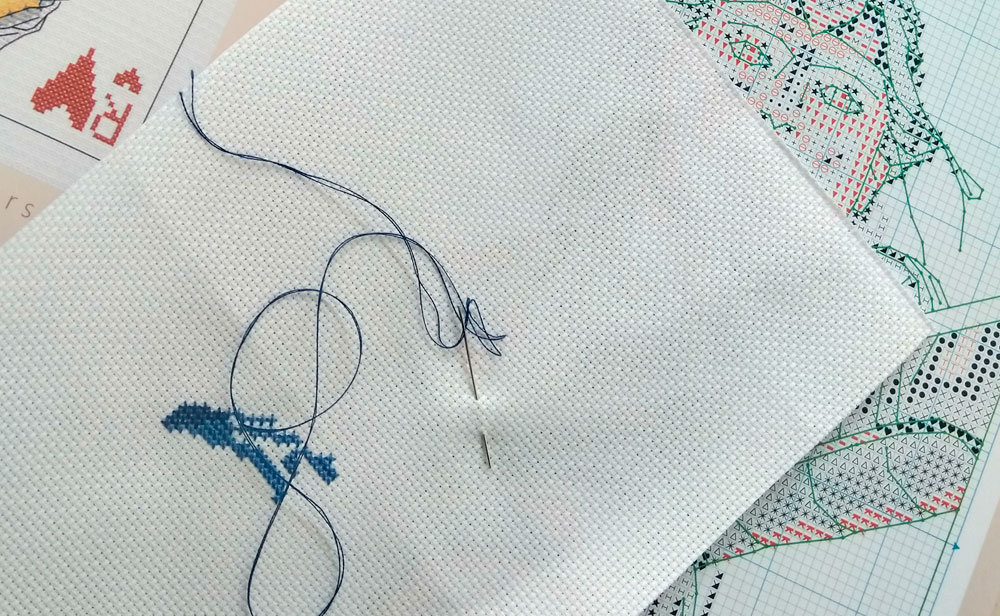in cross stitch
A good start

Reading diagrams
Cross-stitch patterns can be:
- in black and white, with symbols only
- in color only,
- in color with symbols.
Each square in the diagram represents a cross stitch to be embroidered on a square of fabric.
Each diagram includes a color chart showing the correspondence between thread color and stitch type on one side and colors and symbols on the other.
Preparing the work
Before you start embroidering, you need to determine the size of the fabric. Define the surface area the embroidered motif will occupy by making the following division:
Number of stitches in width (e.g. 84 stitches)
/
Number of threads per cm of fabric used (e.g. 7 stitches/cm)
=
Design width in cm (ex: 84 / 7 = 12cm wide).
It's important to make this calculation if you're not using the fabric specified in the pattern.
Please note:
this calculation gives you the size of the embroidered motif: don't forget to allow for extra framing margins when cutting your fabric!
Plan your fabric accordingly, then cut it to size.
To avoid fraying during repeated handling, the edges can be over-stitched by hand or machine.
To center the embroidery design, fold the fabric in quarters. The center is at the intersection of the 2 folds.
Types of fabrics
- Aida fabric is the most popular type for counted-thread cross-stitch.
The warp and weft threads are evenly woven, and the holes are clearly visible.
For this reason, most beginner embroiderers find this fabric easier to work with.
- Unifil fabrics, including linen, cheesecloth and jobelan, are available in a variety of compositions. The squares are not marked on these fabrics as they are on Aïda canvas, and each stitch is executed on 2 weft threads of the fabric.
Embroidery thread
- Six-strand cotton called mouliné
To work it, it's important to separate all the strands, then reconstitute the required number of strands. In most cases, 2 strands are used for cross-stitch and 1 or 2 strands for back-stitch.
- Aurifil cotton
This cotton is a unifil cotton: instead of separating the strands, double or triple the thread according to the instructions provided in your pattern. It can also be used as a single strand, ideal for miniatures.
In this article, I explain how to use Aurifil cottons.